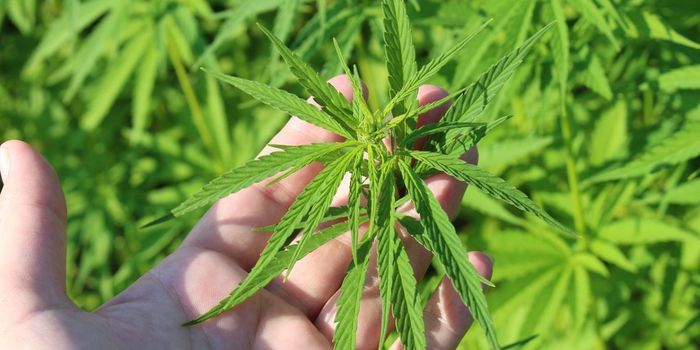Cannabis-Derived Lignanamides: Potential Candidates for the Treatment of Multidrug-Resistant Cancers
A key mechanism weaponized by cancer cells to evade chemotherapeutic treatments in patients with multidrug-resistant cancer is the overexpression of P-glycoprotein (P-gp) on their cell surfaces.
First discovered in cancer cells, P-gp is an ATP-dependent efflux transport pump that facilitates the outflow of cytotoxic compounds (i.e., anticancer drugs, steroids, peptides, detergents, and lipids) from cells through hydrophobic interactions.
The P-gp protein is encoded by the housekeeping gene MDR1/ABCB1 in humans, therefore it is usually expressed under normal physiological conditions. However, when MDR1/ABCB1 transcription is upregulated in cancer cells, P-gp is overexpressed. This overexpression prevents adequate intracellular accumulation of chemotherapeutic drugs, reducing their bioavailability and leading to multidrug resistance (MDR).
Due to the predominant role of P-gp in the development of MDR, inhibition of the P-gp transport system has been comprehensively investigated as a mechanism-based therapeutic intervention for treating multidrug-resistant cancers. Unfortunately, the majority of these studies have yielded little success thus far.
In the wake of these discouraging results, some researchers shifted their focus towards identifying novel compounds capable of inducing P-gp inhibition. In 2000, Anticancer Research published a study demonstrating a role for cannabis-derived compounds in mediating cytotoxic drug accumulation in multidrug-resistant mouse lymphoma cells. Namely, the phytocannabinoids cannabinol (CBN), cannabispirol, and cannabidiol (CBD) elevated cytotoxic drug accumulation. Cannabidiolic acid (CBDA), Δ9-tetrahydrocannabidiolic acid, and Δ9-tetrahydrocannabinol (THC), on the other hand, decreased it.
This notion was revived in a study recently published in In Silico Pharmacology. In the study, researchers looked to hemp (Cannabis sativa L.) for novel candidate compounds that inhibit the P-gp transport system.
More specifically, they assessed the binding modes and presumptive binding affinities of hemp-derived lignanamides against P-gp protein using in silico molecular docking simulations and computational absorption, distribution, metabolism, excretion, and toxicity (ADMET) assays. Two extensively characterized P-gp inhibitors that bind with high affinity to the drug-binding pocket of P-gp – tariquidar and zosuquidar – served as the control ligands.
These analyses revealed that two lignanamides (also known as ‘cannabisins’) in particular – cannabisin M and cannabisin N – are likely to bind the drug-binding pocket of P-gp with higher affinity (– 10.2 kcal/mol for both compounds) than either tariquidar and zosuquidar (binding affinities of –10.1 and – 9.6 kcal/mol, respectively).
Lignanamides are one of the many natural secondary metabolites biosynthesized by cannabis. Characteristically, they are derived from an oxidative coupling mechanism involving hydroxycinnamic acid amide intermediates and are generally isolated from hemp seeds. Previous studies have demonstrated that these compounds possess anti-inflammatory, antioxidant, anticancer, and anti-hyperlipidemic properties.
Based on their findings, the researchers concluded that cannabisin M and cannabisin N harbor promising potential as drug candidates against P-gp. As with any in silico study, these results lay the groundwork for further investigation but need to be validated through in vitro and in vivo studies.
Sources: Frontiers in Oncology; Genomics-Online.com; Anticancer Research; In Silico Pharmacology; BioMed Research International; Journal of Agricultural and Food Chemistry









